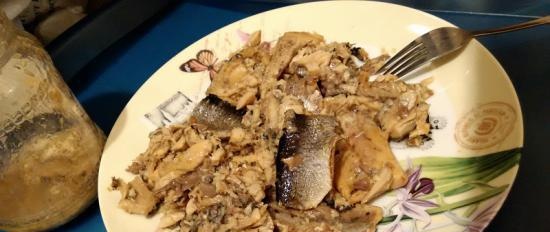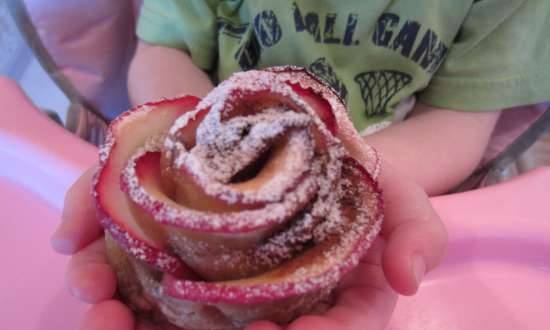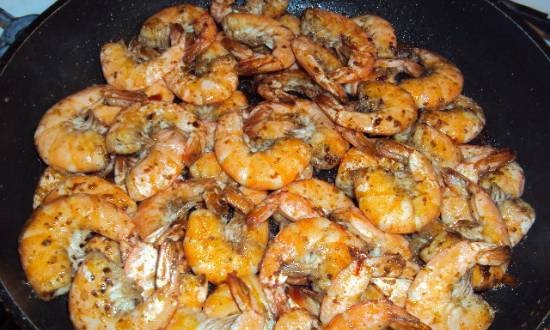Such canned food is stored in room conditions. Opened jars - a couple of days in the refrigerator or in the freezer (if more than a couple of days).
In this case, I made canned fish in its own juice for fish salad


In the 90s, I made a stew (only natural meat without adding salt, sugar, acids, seasonings or spices) for a cat ...
Use baking soda to wash the cans.
Fill the jars only BEFORE the "shoulders".
Before closing the cans with lids, wipe the cans with clean paper towels moistened with vodka.
Do not turn the jars upside down until they have cooled completely.
Checking ready-made canned food "for tightness of the capping" should be carried out AFTER complete cooling.
Natural canned food1. Prepare the canned product.
2. For products requiring the preparation of the filling, prepare the filling
3. In prepared sterilized jars with a capacity of 0.5-0.7 liters (up to the shoulders of the jars) put the canned product with the broth formed during the cooking process, or fill it with a special filling (for products not canned without filling).
4. Close the jars with sterilized lids.
5. Put jars with canned food in a sterilization container (cover it with a lid) to sterilize.
6. From the moment the water boils in the sterilization container, we count the moment when the sterilization of canned food begins. For 0.5 l cans - 60 min., For 0.7 l - 90 min.
7. At the same time, hold a pot of boiling water on the stove to add boiling water to the sterilization container as the water boils away in it (in which there are jars with sterilized canned food).
8. After the end of sterilization, turn off the burner and leave the sterilization container with the canned food in it to cool.
9. We check the cooled cans with canned food for leaks: when wiped dry, slowly roll the can horizontally and check with a paper napkin (blotter, toilet paper) if the liquid has come out from under the lid during rolling (check if the can is leaking). If the can leaks, then it is NOT hermetically sealed. Such jars are opened and their contents are re-laid in accordance with paragraphs 3-5 in clean prepared jars. The rest of the cans that have passed the test are subjected to secondary sterilization 24 hours after cooling (see paragraph 10).
10. From the moment when the canned food has cooled down to room temperature (the sterilization container with canned food in the jars is "slightly warm" to the touch) we count 24 hours - after which we repeat points 6-10.
11. For meat, fish, repeat steps 6-10 again.
In this way, you can preserve meat, fish, mushrooms, peas, beans, etc.
StewNatural canned meat
1. Cut the meat into pieces, put in a saucepan, add a little water and simmer until tender. Do NOT add any spices or salt.
2. If meat with bones was used, separate the meat from the bones.
3. Put the meat with the resulting broth in prepared sterilized jars with a capacity of 0.5-0.7 liters (up to the shoulders of the jars).
Further, paragraphs 4-11 "Natural canned food".
Mushrooms "in their own juice"Canned natural mushrooms
1. Peel the mushrooms, wash, cut into pieces if necessary, put in a saucepan, add a little water and simmer until tender. Do NOT add any spices or salt.
2. Put the mushrooms with the resulting broth in prepared sterilized jars with a capacity of 0.5-0.7 liters (up to the shoulders of the jars).
Further, paragraphs 4-10 "Natural canned food".
Green peas "in their own juice"Canned Natural Green Peas
1. Hull green peas of milk ripeness from the pods.
2. Boil the brine (1 tsp salt and sugar per 1 liter of water). Dip the prepared green peas into the brine and boil them for 3-5 minutes. (depends on the degree of milky ripeness of the green peas).
3. Put green peas in prepared sterilized jars with a capacity of 0.5-0.7 liters (up to the shoulders of the jars) and pour it with brine in which it was boiled.
Further, paragraphs 4-10 "Natural canned food".
Similarly to canning green peas, beans in green pods are canned (bean pods are cut into pieces about 3 cm long).
Spinach and sorrel are similarly canned, only the boiling time (see point 2) is reduced to 3 minutes.
Berries "in their own juice"Canned natural berries
1. Sort out the berries, clear of debris, wash.
2. In prepared sterilized jars with a capacity of 0.5-0.7 liters, put the berries BEFORE the top of the jars (in the process of sterilization, the berries will "shrink").
Further, paragraphs 4-10 "Natural canned food".
Fruits are preserved in the same way (fruits must be cut into pieces).
To "neutralize" the excessively "sour" taste of ready-made canned food, you can add 1 tsp when laying berries / fruits on top of them. granulated sugar.
The method is taken from the book "Polish Cuisine" (authors
S. Berger, E. Kulzova-Gavlichkova, E. Stobnitskaya; per. from Polish. - Warszawa: Polskie wydawnictwa gjspodarcze, 1958 .-- 672 S.)
here are the verbatim recipes from the 1966 edition
CANNED VEGETABLES
Green beans in jars
1. Wash the pods, remove the fibers (cut the long pods in half), pour boiling water with salt and sugar in a bowl (for 1 liter of water - 10 g of salt and 20 g of sugar) so that it covers the beans, and boil for 3 minutes.
2. Place hot beans in glass cans, leaving 3 cm of free space below the edges of the can, and pour hot dressing in which the beans were boiled.
3. Carefully wipe the edges of the cans with a clean, boiled cloth or paper towel, apply dry rubber gaskets, dry lids and clamps.
4. Insert the jars into dishes with a wooden or paper lining at the bottom, with enough warm water to reach ¾ of the height of the jar.
5. Heat dishes with jars to a boil and boil for 1 hour.
6. Remove the jars, place them on a table or kitchen board, cool them down, remove the clamps and check if the jars have been closed. Wipe dry the edges of open cans, lids and rubber gaskets, close cans.
7. The next day, pasteurize the beans again for 40 minutes, starting from the moment of boiling.
8. Take the jars out of the dishes, cool and check if they are closed. Banks that are not closed should be boiled again, changing the rubber gasket.
9. Store in a cool dry place.
PRESERVATION OF MUSHROOMS
Pasteurizing or boiling mushrooms in glass jars placed in a bowl of water, is produced in the following way. This method can be used to preserve boletus, mushrooms, mushrooms, boletus, boletus, mushrooms, aspen mushrooms and others.
1. Peel fresh young non-worm mushrooms, wash thoroughly and cut into strips.
2. Pour the chopped mushrooms with a little hot water, salt and simmer.
3. When the mushrooms become soft, put Veka jars (best of all ½ liter capacity) into boiled or oven-boiled Veka jars, leaving about 4 cm of free space below the upper edge.
4. Carefully wipe the edges of the cans with a clean, boiled cloth or paper towel, put on dry rubber gaskets, dry lids and clips.
5. Insert the jars into dishes with a wooden or paper lining at the bottom, with so much warm water that the level reaches ¾ of the height of the jar. Boil dishes with jars for 1 hour.
6. Take the jars out of the dishes onto the table, cool them down, remove the clips and check the jars for clogging. Wipe the edges, lids and rubber seals dry on unsealed cans. Cork the banks.
7. The next day, the mushrooms should be pasteurized again. Boil unsealed jars again.
8. Store in a cool dry place.
In winter, prepare pasteurized mushrooms as follows. Transfer the mushrooms from a jar to a saucepan, add chopped onions, a little pepper, butter and lard and simmer. When the onion is soft, season the mushrooms with sour cream and boil. The taste of mushrooms pasteurized in this way does not differ from the dishes prepared in summer from fresh mushrooms. Pasteurized mushrooms should be used on the day the jar was opened.
CANNING OF MEAT
Roasted goose in cans "Veka"
4 kg goose (gutted, plucked) • 50 g salt • 3 g marjoram
1. Burn the plucked and gutted goose over burning paper or over the flame of an alcohol lamp and wash well.
2. Grate the goose inside and out with salt and marjoram, put on a baking sheet, pour with a little water, insert into a heated oven and fry, pouring over the juice.
3. When the meat is almost tender, remove, chill and cut into pieces.
4.Place pieces of meat tightly in boiled or oven-steamed Veka jars. Pour the juice remaining after roasting evenly into the jars.
5. Carefully wipe the edges of the cans with a clean boiled cloth or paper towel, put on dry rubber gaskets, dry tires and clips.
6. Insert the jars into dishes with a wooden or paper lining at the bottom, with enough lukewarm water that the level reaches ¾ of the height of the jar. Bring dishes with jars to a boil and boil for 1 hour.
7. Take the jars out onto the table or on the kitchen board, cool them down, remove the clamps and check that the jars are well closed. Put clamps on closed cans. The edges of uncovered cans, rubber gaskets and tires should be thoroughly wiped off. close the jars again (in unclosed jars it is better to change the rubber gaskets).
8. Repeat this three times every 24 hours. Jars that were not closed during the first cooking should be boiled again.
9. Store in a cool, dry and dark place.
Boiled chicken in jars "Century"
1 kg of chicken (gutted, plucked) • 150 g of vegetables • 3 allspice peas • salt
1. Burn the plucked and gutted chicken over burning paper or over the flame of an alcohol lamp and wash thoroughly.
2. Cut into pieces.
3. Place the chicken in a boiling vegetable broth, salt to taste and cook.
4. When the chicken is still not quite soft, remove, cool, put in jars and pour over hot broth (without vegetables). The broth should be about ½ liter, if there is more, the excess should be evaporated.
5. Carefully wipe the edges of the cans with a clean boiled cloth or paper towel, put on dry rubber gaskets, dry tires and clips. Then proceed as indicated in the recipe "Fried goose", points 6-9.
You can also preserve any boiled poultry or boiled meat.
Pate in banks "Century"
250 g pork • 300 g veal • 200 g bacon • 250 g pork liver • 100 g onions • 100 g stale rolls • 3 eggs • 1 bay leaf • 3 allspice peas • black ground pepper • salt
1. Chop and fry the bacon.
2. Cut the washed meat into pieces and throw on some of the fat melted from bacon, lightly fry, transfer to another dish, pour with a little hot water, add chopped onions, salt, allspice, bay leaf and simmer.
3. Fry the washed liver on the rest of the fat.
5. In the juice left after stewing the meat (a very small amount of juice should remain), wet the roll.
6. Pass the meat and bun 2 times through a meat grinder with a fine wire rack.
7. Add eggs, ground pepper to the meat mass, add salt, mix thoroughly.
8. Put the paste tightly into boiled or oven-boiled ½ liter jars, leaving about 4 cm of free space below the top edge of the jar.
9. Carefully wipe the edges of the can with a clean boiled cloth or paper towel, put on dry rubber gaskets, dry tires and clips. Then proceed as indicated in the recipe "Roasted goose in cans" Veka ", points 6-9.
You can also make poultry and game pate.
Lids of the "Vekka" type can be replaced with lids of the "Twist-Off", "Optima" type, with a clasp lock or the VAKS system and cans corresponding to these lids. Close the lids tightly at once. Do not turn the jars until they have cooled completely.
When preparing mushrooms for canning according to this recipe, I simply carcass mushrooms "in my own juice" and do not salt at all. In winter, from these canned food you can make anything that uses boiled or stewed mushrooms, including mushroom soup.













